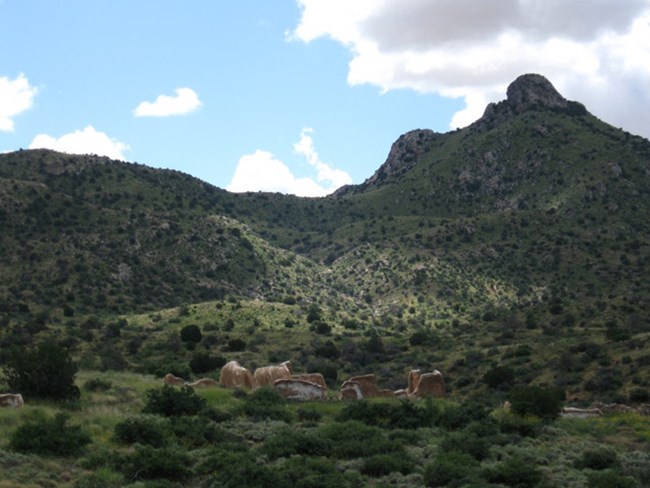
NPS Photo
Overview
Fort Bowie has a relatively rich flora for an area so small in size and with fairly uniform topography. 471 plant species have been identified in the area, a much higher number than would normally be expected. This diversity of plant life is due primarily to the geologic substrates (limestone, granitic and metamorphic rock), the presence of permanent water, and the influence of the Madrean biogeographic region.The Fort Bowie National Historic Site Vegetation Inventory Project delivers many geospatial and vegetation data products, including an in-depth project report discussing methods and results, which include descriptions to vegetation associations, field keys to vegetation associations, map classification, and map-class descriptions. The suite of products also includes a database of vegetation plots, and accuracy assessment (AA) sites; digital images of field sites; digital aerial imagery; digital maps; a contingency table listing AA results; and a geodatabase of vegetation, field sites (vegetation plots, and AA sites), aerial imagery, project boundary, and metadata.
Products
The products of vegetation mapping projects are stored and managed in the National Park Service's Data Store, a repository for documents and publications relating to park resources. From the highlighted items below, click on the type of information you are looking for.
Last updated: September 27, 2018
